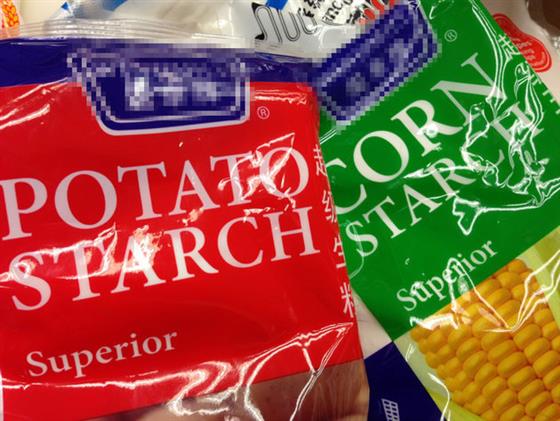
Know Thy Starches
By Sheere Ng - Wednesday, Jan 09, 2013
So you want to make an apple pie. The recipe calls for 3 tablespoons of tapioca starch for the filling.You don’t have it at home but there’s some leftover cornstarch. Since they are both thickeners, you are tempted to use that instead of making a trip to the supermarket, but, will it work?
Most food websites and blogs raise no objection to replacing corn, tapioca and potato starches with one another. But, there are certain rules to abide as they after all have different properties. Let’s see what their characteristics are and with what they mingle best.
Corn Starch Corn starch is high in amylose – one of the two molecules found in starches. This molecule is more tightly packed, with a higher density, hence it makes firmer gels. It is mostly used for gravies and sauces. Compared with potato starch, it has a more neutral flavour (but it has a slightly chalky aftertaste, not suitable for delicate flavours) and makes a more translucent sauce (although it turns opaque when cooled). As corn starch has a fine consistency, it is prone to clumping when encountering heat and moisture. Hence, it has to be stirred in cold water before it’s added into the hot liquid to ensure an even distribution. Corn starch thickens completelyat 80 Degrees C. The final product cannot be frozen, because when thawed, the corn starch gel will break down and release liquid. It also doesn’t mix well with acidic liquids.
Potato Starch Just the opposite of corn starch, potato starch is high in amylopectin. This molecule breaks down quickly and is highly soluble in water. Hence, it thickens at a lower temperature, about 58 Degrees C. Be sure not to cook it beyond 65 Degrees C, as the sauce will break down and thin again. Potato starch makes a softer, opaque gel and its grainy texture is often detected in the final product. It is used in soups (think chowder) and gravies. The good thing is it retains texture when chilled, whereas corn starch tends to become thick and gummy.
Mr Kiang of Toa Payoh Hwa Heng Beef Noodle reveals that he uses potato starch to thicken the sauce. He also let us in on a trick to prolong the cooking process of the thickened sauce without it breaking down. “I use tap water that sits overnight,” he says, but he chooses to be mysterious about the logic behind it. We know that chlorine evaporates from water within 24 hours. Could it be that?
Tapioca Starch This is mostly used for baking (thickens pie fillings), to enhance the chewy texture and flavour of baked goods. Tapioca starch is very bland so it doesn’t alter the taste of the final product. It binds well with water even without heat. It is an alternative to corn starch in soups, stews and sauces but with thinner results. You may have to use twice the amount of tapioca and corn starch in a recipe. Unlike corn starch, it remains stable when frozen.
Mr Chin of An Ji Famous Fish Head Noodles likes to use tapioca starch to thicken his hor fun sauce because it gives a glossy finish to the final product. But he warns us of the trickiness to get the right consistency: “First you have to get the starch water ratio right. Then, if the stock is not hot enough when you pour the mixture in, the sauce will become lumpy. Once it thickens successfully you got to turn off the fire otherwise it becomes too thick and burns quickly.”



